Menu
-
MenuBack
- Home
-
Categories
-
-
Categories
-
Vegetable Seeds
-
Varieties by Country
- Varieties from Armenia
- Varieties from BiH
- Varieties from Croatia
- Varieties from France
- Varieties from Germany
- Varieties from Greece
- Varieties from Hungary
- Varieties from India
- Varieties from Italy
- Varieties from Japan
- Varieties from North Macedonia
- Varieties from Peru
- Varieties from Russia
- Varieties from Serbia
- Varieties from Slovenia
- Varieties from Spain
- Varieties from Thailand
- Varieties from Turkey
- Varieties from USA
- Tomato Seeds
- Corn Seeds
- Gourd family
- Bean family
- Cucumber Seeds
- Pepper Seeds
- Carrot family
- Onion family
- Lettuce Seeds
- Potato family
- Cabbage family
- Radish Seeds
- Beetroot family
- Watermelon Seeds
- Melon Seeds
- Cauliflower Seeds
- Sunflower family
-
Varieties by Country
- Fruit Seeds
- Chili - Habanero Seeds
- Medicinal Herb Seeds
- Climbing Plants Seeds
- Trees Bonsai Seeds
- Palm Seeds
- Ornamental Grasses Seeds
- Tobacco Seeds
-
Vegetable Seeds
-
-
-
-
- NEW PRODUCTS
- Create account
- Delivery - Payment
- FAQ
- Home
-
- Large Packets of Seeds
- Giant Plants Seeds
- Vegetable Seeds
- Varieties by Country
- Varieties from Armenia
- Varieties from BiH
- Varieties from Croatia
- Varieties from France
- Varieties from Germany
- Varieties from Greece
- Varieties from Hungary
- Varieties from India
- Varieties from Italy
- Varieties from Japan
- Varieties from North Macedonia
- Varieties from Peru
- Varieties from Russia
- Varieties from Serbia
- Varieties from Slovenia
- Varieties from Spain
- Varieties from Thailand
- Varieties from Turkey
- Varieties from USA
- Tomato Seeds
- Corn Seeds
- Gourd family
- Bean family
- Cucumber Seeds
- Pepper Seeds
- Carrot family
- Onion family
- Lettuce Seeds
- Potato family
- Cabbage family
- Radish Seeds
- Beetroot family
- Watermelon Seeds
- Melon Seeds
- Cauliflower Seeds
- Sunflower family
- Varieties by Country
- Fruit Seeds
- Chili - Habanero Seeds
- Medicinal Herb Seeds
- Climbing Plants Seeds
- Trees Bonsai Seeds
- Banana Seeds
- Palm Seeds
- Ornamental Grasses Seeds
- Tobacco Seeds
- Flower Seeds
- Cactus Seeds
- Water plants seeds
- Sowing Instructions
- Fruit and vegetable molds
- Mushroom Mycelium
- Plant Bulbs
- Bamboo seeds
- Ayurveda Plants
- F1 Hybrid Seeds
- Packaging and stuff
- Cold-resistant plants
- Plants Care
- Organic Spices
- Delivery - Payment
- No PayPal and Card payment X
Last Product Reviews
Out of the two seeds, one germinated and the other one was dead and floatin...
By
 Riikka H on 07/03/2024
Riikka H on 07/03/2024
Verified Purchase
Best sellers
There are 1294 products.
Showing 586-600 of 1294 item(s)
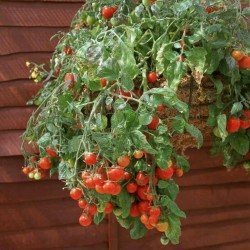
Red & Yellow Tumbling Tom...
Price
€1.55
(SKU: VT 145)
Seeds Gallery EU,
5/
5
<h2><strong>Red & Yellow Tumbling Tom Tomato Seeds</strong></h2>
<h2><span style="color:#ff0000;"><strong>Price for Package of 5 seeds.</strong></span></h2>
<p>Trade flowering hanging baskets for pretty-as-a-picture trailing tomatoes. Tumbling Tom Red plants cascade from hanging baskets, tall containers, or window boxes, and when they’re loaded with sparkling red fruit, the effect is striking. Anticipate a harvest of up to four pounds of tomatoes per plant, with new fruit ripening throughout the summer. These plants have a trailing growth habit, so they don’t need staking. Tuck one to two into a tall pot or large hanging basket. Resistant to fusarium wilt, verticillium wilt, and nematodes.</p>
<p>Light Full sun</p>
<p>Fruit weight 15-20g</p>
<p>Matures 63 to 70 days</p>
<p>Plant spacing 10 inches apart</p>
<p>Plant size 30-50 cm</p>
<p>Plant type compact determinate (cascading)</p>
VT 145 Y (5 S)


Coming Soon
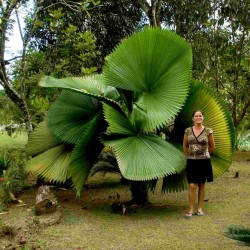
Ruffled fan Palm Seeds...
Price
€4.80
(SKU: PS 12)
Seeds Gallery EU,
5/
5
<meta http-equiv="Content-Type" content="text/html; charset=UTF-8" />
<h3><span style="font-size: 14pt;"><strong>Ruffled fan Palm Seeds (Licuala grandis)</strong> </span></h3>
<h3><span style="font-size: 14pt;"><strong><span style="color: #f00404;">Price for Package of 3 seeds.</span></strong></span></h3>
<p>Ruffled fan palm is perhaps one of the most interesting and elegant of all small palms. Its glossy, pleated, fan-like fronds are fantastic as are its drooping cluster of red fruits that mature late in the season. This evergreen, frost-tender palm is native to the wet, humid rainforests of the Republic of Vanuatu and the Solomon Islands east of Australia. It's a small understory palm that’s ideal for small, tropical landscapes as well as interiorscapes.</p>
<p><span>Atop the thin, fiber covered trunk of this palm is a crown of twelve to twenty beautiful leaves. Each glossy, deep green frond is wedge-shaped and looks as if it’s been pleated. The frond stems (petioles) are long and have sharp, curved teeth at the base. Most are held upright but the oldest arch gracefully. In early or midsummer, a cluster of yellowish white blossoms appear. These develop into small, round, red fruits by autumn.</span></p>
<p><span>Grow ruffled fan palm in partial shade or dappled sun when small and young. Older specimens will tolerate more sun if humidity is high and summer temperatures not too scorching. Although there are Licuala grandis known to have survived temperatures of -1.5° C. it is advisable to plant this palm in regions only where temperatures do not fall below 3 degrees C. For good health plant in a fast-draining soil that’s fertile and evenly moist. Sandy soil amended with lots of humus is ideal. For dramatic landscape effect, cluster ruffled fan palm beneath a tall shade tree or shaded building foundation. Indoors it will become a nice container specimen as long as it receives very bright light, warmth and its soil never becomes dry. This palm responds favorably to frequent, light fertilization.</span></p>
<p><span>Solitary trunk of up to 3 m in height and 5-6 cm in diam., Leaf circular, undivided and regularly pleated leaf; about 22 inch or more in diameter with a notched edge, with the old dry leaves persisting.</span> </p>
<p><a href="https://www.youtube.com/watch?v=Hx6WBaQ1h5M" target="_blank" class="btn btn-default" rel="noreferrer noopener">Ruffled fan Palm (Licuala grandis)</a></p>
<p><strong><span>Scientific name:</span></strong><span> Licuala grandis</span></p>
<p><strong><span>Common names</span></strong><span>: The Ruffled Fan Palm is also known Vanuatu Fan Palm, Palas Palm, and Ruffled Lantan Palm.</span></p>
<p><strong><span>Family:</span></strong><span> Arecaceae</span></p>
<p><strong><span>Origin:</span></strong><span> It is native to the Vanuatu Islands, off the coast of Australia.</span></p>
<p><strong><span>Appearance:</span></strong><span> It has a single slender trunk, 4-5 inches in diameter that takes years to develop. The Ruffled Fan Palm is known for its unique palmate, or fan-shape leaves, with attractive splitting patterns that make it stand out in any environment. Leaves are circular, luscious green, glossy, ruffled, hence the name Ruffled Fan Palm, about 22 inches in diameter, with notched tips.</span></p>
<p><strong><span>Flowers/Fruits:</span></strong><span> The inflorescence emerges from among the leaves bearing bisexual flowers, male and female reproductive organs grow on the same flower. Ruffled Fan Palm produces marble-like green fruit that turns red when ripe. This berry looking fruit is round with a single seed inside.</span></p>
<p><strong><span>Growth Rate:</span></strong><span> Slow. Licuala grandis is a very attractive, slow growing palm that can get up to 5-10ft tall, but usually doesn’t get higher than 6ft with a spread of 5-10ft wide.</span></p>
<p><strong><span>Outdoor/Indoor Use:</span></strong><span> Both.</span></p>
<p><strong><span>Cold Tolerance:</span></strong><span> It can tolerate cold down to 30F when mature enough. It is great for growing in USDA Zones 10a (30 to 35 F) to 11 (above 40 F).</span></p>
<p><strong><span>Light Req:</span></strong><span> Partial shade. It grows best in partial shade and should not be exposed to full sun.</span></p>
<p><strong><span>Water Req:</span></strong><span> High. It needs a lot of water with good drainage</span></p>
<p><strong><span>Maintenance:</span></strong><span> Easy. Make sure to protect it from high winds to avoid frond damage. To prevent nutritional deficiency, apply good quality palm fertilizer that has continuous release formula twice a year during growing season.</span></p>
<p><strong><span>Propagation:</span></strong><span> Propagated by seed. It might take as long as 12 months for seeds to sprout.</span></p>
PS 12 (3 S)

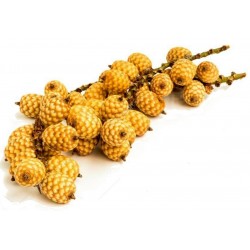
Rattan Seeds (Calamus manan)
Price
€4.50
(SKU: PS 11)
Seeds Gallery EU,
5/
5
<h2><span style="font-size: 14pt;" data-mce-style="font-size: 14pt;" class="n1ed--selected"><strong>Rattan Seeds (Calamus manan)</strong></span></h2><h2><span style="color: #fb0101; font-size: 14pt;" data-mce-style="color: #fb0101; font-size: 14pt;"><strong>Price for Package of 3 seeds.</strong></span></h2><p><span>Calamus manan is a robust, single stemmed, high-climbing, dioecious rattan. Plants produce a strong durable cane up to 8 cm in diameter, with internodes to 40 cm in length, and with stems eventually reaching to over 100 m. Growth rates of over 7 m a year have been inferred from observation of plants in Sabah (Dransfield and Tan, pers. obs. 1989), but more usually 1-3 m or more a year. Leaves cirrate to 8 m long including the cirrus to 3 m long. Petiole short, leaflets irregular in juvenile leaves and regular in mature leaves, to 45 on each side of rachis, lanceolate. Inflorescences massive, the male much more finely branched than the female, 70 cm long. Ripe fruit rounded to ovoid, to 2.8 cm long by 2.0 cm wide and covered with 15 vertical rows of yellowish scales with blackish-brown margins. Seed ovoid, to 1.8 cm by 1.2 cm, with finely pitted surface.</span></p><p><span>Solitary massive high climbing rattan, reaching eventually lengths of over 100 m. Stem without sheaths to 8 cm in diameter, sometimes quite slender (2.5 cm) at the very base, with sheaths to 11 cm in diameter; internodes to 40 cm long. Sheaths dull grey green densely armed with black laminate hairy edged triangular spines arranged in lateral groups or scattered, the largest to J cm long by 1 cm wide at the base, and with numerous much smaller spines to 5 mm long between; spines horizontal or slightly reflexed; thin white wax abundant between spines. Knee conspicuous armed as leaf sheath. Ocrea ill-defined. Leaf cirrate very massive to 8 m long including the cirrus to 3 m long; petiole short, to 12 cm long by 5 cm wide in mature plants, much longer in juveniles armed densely as is the rachis with short triangular spines both on the upper surface and beneath, with scattered grey in dumentum between. Leaflets irregular in juvenile leaves, regular in mature leaves, limply pendulous and versatile, to 45 on each side, pale grey-green, the largest to 60 cm long by 6 cm wide bristly near the tips. Inflorescences massive, the male much more finely branched than the female, to 2.5 m long with up to 9 partial inflorescences on each side to 70 cm long; all bracts rather densely armed with triangular spines to 3 mm high and red-brown in dumentum. Rachillae to 15 cm long. Ripe fruit rounded to ovoid, to 2.8 cm long by 2.0 cm wide shortly beaked, and covered in 15 vertical rows of yellowish scales with blackish brown margins. Seed ovoid, to 1.8 cm long by 1.2 cm wide, with finely pitted surface; endosperm densely and deeply ruminate. Seedling leaf with 2 divergent leaflets cucullate with a waxy blue-grey bloom on a pale dull green surface. (J. Dransfield, A Manual of the rattans of the Malay Peninsula. Malayan Forest Records 29.. 1979)/Palmweb. Editing by edric.</span></p><p><span>"Rotan manau" is widespread, but usually confined to steep slopes in hill Dipterocarp forest. It is rather rarely found in lowland Dipterocarp forest, and there, nearly always on steep slopes. It has an altitudinal range of about 50-1000 m and is at present most abundant between 600 and 1000 m altitude. It is likely however that it was formerly much more widespread, with its range being limited now by over exploitation. Seedlings are very characteristic and often abundant in hill forest. Calamus manan is variable in size and coloration. Beccari originally separated Malayan material as a separate species (C. giganteus) but I consider this to be conspecific with C. manan. Novices sometimes confuse "rotan manau" with "rotan dok" which is also very large and often grows with it. However, "rotan dok" is immediately distinguished because it has a flagellum and no cirrus whereas "rotan manau" has a cirrus but no flagellum. Calamus tumidus is very close to C. manan but can be separated on its smaller size, different leaf sheath armature and the very large bulbous, swollen knee. (J. Dransfield, A Manual of the rattans of the Malay Peninsula. </span>Malayan Forest Records 29.. 1979)/Palmweb.</p>
PS 11 (3 S)


Plant resistant to cold and frost
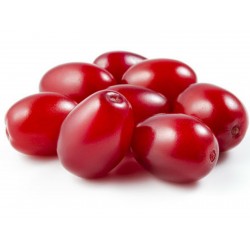
Cornelian Cherry, European...
Price
€2.05
(SKU: V 217)
Seeds Gallery EU,
5/
5
<!DOCTYPE html>
<html>
<head>
<meta http-equiv="Content-Type" content="text/html; charset=UTF-8" />
</head>
<body>
<h2><strong>Cornelian Cherry, European Cornel Seeds (Cornus mas)</strong></h2>
<h2><span style="color: #ff0000;">Price for Package of 10 seeds.</span></h2>
<p>Cornus mas (Cornelian cherry, European cornel or Cornelian cherry dogwood) is a species of flowering plant in the dogwood family Cornaceae, native to southern Europe (from France to Ukraine) and southwestern Asia including Armenia, Azerbaijan, Georgia, Iran, Turkey, Israel, Lebanon and Syria.</p>
<p>It is a medium to a large deciduous shrub or small tree growing to 5–12 m tall, with dark brown branches and greenish twigs. The leaves are opposite, 4–10 cm long and 2–4 cm broad, with an ovate to oblong shape and an entire margin. The flowers are small (5–10 mm diameter), with four yellow petals, produced in clusters of 10–25 together in the late winter (between February and March in the UK),[1] well before the leaves appear. The fruit is an oblong red drupe 2 cm long and 1.5 cm in diameter, containing a single seed.</p>
<h3><strong><em>Uses</em></strong></h3>
<h3><strong>Fruit</strong></h3>
<p>The fruits when ripe on the plant bear a resemblance to coffee berries, and ripen in mid- to late summer. The fruit is edible (mainly consumed in Eastern Europe, UK,[1] and Iran), but the unripe fruit is astringent. The fruit only fully ripens after it falls from the tree. When ripe, the fruit is dark ruby red or a bright yellow. It has an acidic flavor which is best described as a mixture of cranberry and sour cherry; it is mainly used for making jam, makes an excellent sauce similar to cranberry sauce when pitted and then boiled with sugar and orange, but also can be eaten dried. In Azerbaijan and Armenia, the fruit is used for distilling vodka, in Austria and German Alps is used for distilling Dirndlbrand, in Albania and Bosnia and Herzegovina it is distilled into raki, and in Greece crana berries are used to make a home-made liqueur. In Turkey and Iran it is eaten with salt as a snack in summer, and traditionally drunk in a cold drink called kızılcık şerbeti. Cultivars selected for fruit production in Ukraine have fruit up to four cm long. It is eaten in Eastern Europe in many ways including as a medicine. It is very high in vitamin C and is used to fight colds and flus.</p>
<p> </p>
<p>The fruit of C. mas (together with the fruit of C. officinalis) has a long history of use in traditional Chinese medicine. Known as shan zhu yu, 山茱萸, it is used to retain the jing, essence, to tonify the kidneys, and in cases of spermatorrhea.</p>
<h3><strong>Flowers</strong></h3>
<p>The species is also grown as an ornamental plant for its late winter yellow flowers, which open earlier than those of Forsythia. While Cornus mas flowers are not as large and vibrant as those of the Forsythia, the entire plant can be used for a similar effect in the landscape.</p>
<h3><strong>Wood</strong></h3>
<p>The wood of C. mas is extremely dense and, unlike the wood of most other woody plant species, sinks in water. This density makes it valuable for crafting into tool handles, parts for machines, etc. Cornus mas was used from the seventh century BC onward by Greek craftsmen to construct spears, javelins and bows, the craftsmen considering it far superior to any other wood. The wood's association with weaponry was so well known that the Greek name for it was used as a synonym for "spear" in poetry during the fourth and third centuries BC.[4] In Italy, the mazzarella, uncino or bastone, the stick carried by the butteri or mounted herdsmen of the Maremma region, is traditionally made of cornel-wood, there called crognolo or grugnale, dialect forms of Italian: corniolo.</p>
<p>The red dye used to make fezzes were produced from its bark, and tannin is produced from its leaves.</p>
<p><strong>Garden history</strong></p>
<p>Cornus mas, "male" cornel, was named so to distinguish it from the true dogberry, the "female" cornel, Cornus sanguinea, and so it appears in John Gerard's Herbal.[6] The shrub was not native to the British Isles. William Turner had only heard of the plant in 1548,[7] but by 1551 he had heard of one at Hampton Court Palace.[8] Gerard said it was to be found in the gardens "of such as love rare and dainty plants".[6] By the 17th century, the fruits were being pickled in brine or served up in tarts.</p>
<p>The appreciation of the early acid-yellow flowers is largely a 20th-century development.[9] The Royal Horticultural Society gave Cornus mas an Award of Garden Merit in 1924. The cultivars 'Golden glory'[10] and 'Variegata'[11] have also gained the award.</p>
</body>
</html>
V 217 (2,5g)


Variety from Peru
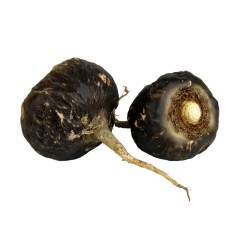
Black Maca Organic Seeds...
Price
€2.05
(SKU: VE 168)
Seeds Gallery EU,
5/
5
<!DOCTYPE html>
<html>
<head>
<meta http-equiv="Content-Type" content="text/html; charset=UTF-8" />
</head>
<body>
<h2><strong>Black Maca Organic Seeds (Lepidium meyenii) Aphrodisiac</strong></h2>
<h2><span style="color: #ff0000;"><strong>Price for Package of 20 seeds.<br /></strong></span></h2>
<div>Maca (Lepidium meyenii) is a hearty root vegetable grown in the high Andes of Bolivia and Peru. Cultivated since pre-Incan times, it is prized by indigenous peoples for its nutritional and medicinal properties along with its power as an aphrodisiac, energy enhancer and hormonal balancer.</div>
<div>Nutritional Profile:</div>
<div>A dietary staple for the indigenous peoples of the Andes, Maca (L. meyenii) is rich in nutrients, containing 31 different minerals, amino acids, antioxidants, alkaloids and sterols. Maca is an "adaptogen", a substance which brings the body to a heightened state of resistance to disease. Studies suggest that it has a balancing effect on the hypothalamus, which in turn balances other endocrine glands in the body.</div>
<div> </div>
<div>Clinical Research:</div>
<div>Maca (L. meyenii) root has flourished for thousands of years in the high Andes at altitudes up to 14,000 feet, in extreme climatic conditions where few other plants can survive a single season. Scientists suggest that Maca's remarkable endurance may help to explain its energizing and adaptogenic properties. Peruvian and Chinese researchers have conducted clinical tests on both humans and animals, verifying Maca's capacity to strengthen the libido and increase sperm count.
<div>
<table cellspacing="0" cellpadding="0" border="1">
<tbody>
<tr>
<td colspan="2" width="100%" valign="top">
<h3><span style="color: #008000;"><strong>Sowing Instructions</strong></span></h3>
</td>
</tr>
<tr>
<td valign="top" nowrap="nowrap">
<p><span style="color: #008000;"><strong>Propagation:</strong></span></p>
</td>
<td valign="top">
<p><span style="color: #008000;">Seeds</span></p>
</td>
</tr>
<tr>
<td valign="top" nowrap="nowrap">
<p><span style="color: #008000;"><strong>Pretreat:</strong></span></p>
</td>
<td valign="top">
<p><span style="color: #008000;">0</span></p>
</td>
</tr>
<tr>
<td valign="top" nowrap="nowrap">
<p><span style="color: #008000;"><strong>Stratification:</strong></span></p>
</td>
<td valign="top">
<p><span style="color: #008000;">0</span></p>
</td>
</tr>
<tr>
<td valign="top" nowrap="nowrap">
<p><span style="color: #008000;"><strong>Sowing Time:</strong></span></p>
</td>
<td valign="top">
<p><span style="color: #008000;">all year round </span></p>
</td>
</tr>
<tr>
<td valign="top" nowrap="nowrap">
<p><span style="color: #008000;"><strong>Sowing Depth:</strong></span></p>
</td>
<td valign="top">
<p><span style="color: #008000;">Just sprinkle on the surface of the substrate + gently press</span></p>
</td>
</tr>
<tr>
<td valign="top" nowrap="nowrap">
<p><span style="color: #008000;"><strong>Sowing Mix:</strong></span></p>
</td>
<td valign="top">
<p><span style="color: #008000;">Coir or sowing mix + sand or perlite</span></p>
</td>
</tr>
<tr>
<td valign="top" nowrap="nowrap">
<p><span style="color: #008000;"><strong>Germination temperature:</strong></span></p>
</td>
<td valign="top">
<p><span style="color: #008000;">20 ° C</span></p>
</td>
</tr>
<tr>
<td valign="top" nowrap="nowrap">
<p><span style="color: #008000;"><strong>Location:</strong></span></p>
</td>
<td valign="top">
<p><span style="color: #008000;">bright + keep constantly moist not wet</span></p>
</td>
</tr>
<tr>
<td valign="top" nowrap="nowrap">
<p><span style="color: #008000;"><strong>Germination Time:</strong></span></p>
</td>
<td valign="top">
<p><span style="color: #008000;">1-6 weeks</span></p>
</td>
</tr>
<tr>
<td valign="top" nowrap="nowrap">
<p><span style="color: #008000;"><strong>Watering:</strong></span></p>
</td>
<td valign="top">
<p><span style="color: #008000;">Water regularly during the growing season</span></p>
</td>
</tr>
<tr>
<td valign="top" nowrap="nowrap">
<p><span style="color: #008000;"><strong> </strong></span></p>
</td>
<td valign="top">
<p><br /><span style="color: #008000;"><em>Copyright © 2012 Seeds Gallery - Saatgut Galerie - Galerija semena. </em><em>All Rights Reserved.</em><em></em></span></p>
</td>
</tr>
</tbody>
</table>
</div>
</div>
</body>
</html>
VE 168 (20 S)


Giant plant (with giant fruits)
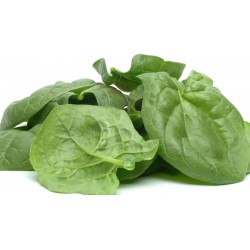
Spinach Seeds GIANT AMERICAN
Price
€2.15
(SKU: VE 43 (2g))
Seeds Gallery EU,
5/
5
<h2><strong>Spinach Seeds GIANT AMERICAN</strong></h2>
<h3><span style="color: #ff0000;"><strong>Price for Package of 160 (2g) seeds.</strong></span></h3>
<p><span style="color: #000000;">A really dark green spinach with heavily blistered, rounded leaves on semi-erect plants.</span></p>
<p><span style="color: #000000;">The dark green heavily blistered leaves of Giant American can be harvested all through the summer and autumn months. A very productive variety.</span></p>
<p><span style="color: #000000;"> </span></p>
<p><span style="color: #000000;">Produces masses of heavily blistered dark green leaves.</span></p>
<p><span style="color: #000000;">Thin, juicy and sweetly flavoured.</span></p>
<p><span style="color: #000000;">Harvest during the summer and autumn.</span></p>
<p><span style="color: #000000;">Suitable For - Vegetable plot, raised beds, container garden, limited space, window boxes</span></p>
<p><span style="color: #000000;"> </span></p>
<p><span style="color: #000000;">Sowing Months - March - August</span></p>
<p><span style="color: #000000;">Harvest - May - November</span></p><script src="//cdn.public.n1ed.com/G3OMDFLT/widgets.js"></script>
VE 43 (2g)

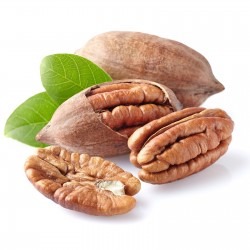
Pecan Seeds (Carya...
Price
€4.95
(SKU: V 209)
Seeds Gallery EU,
5/
5
<h2><strong>Pecan Seeds (Carya illinoinensis)</strong></h2>
<h2><span style="color: #ff0000;"><strong>Price for Package of 1 seed.</strong></span></h2>
<p>Delicious, buttery yet rich-flavored pecans are one of the popular edible tree-nuts known to American aborigines since centuries ago. They are enriched with many health-benefiting nutrients, minerals, vitamins that are essential for optimum health.</p>
<p>Pecan is a large-sized deciduous tree belonging to a member of the hickory family, Juglandaceae. The tree is native to the central and southern parts of the United States of America. Today, however, it is being cultivated in many regions of the world as an important commercial tree-nuts crop. Scientific name: Carya illinoinensis.</p>
<p>During each spring season, pecan tree bears catkins, consisting of clusters of monoecious flowers arranged closely along a central stem that ultimately develops into fruits by autumn.</p>
<p>Pecan nuts, like the product of all other members of the hickory genus, are not really nuts but botanically fruits (drupe).</p>
<p>Each fruit features dark brown, oval to an oblong shape, measuring 1 to 3 inches long and 0.5–1 inch broad. Their rough, outer husk or involucre is 3-4 mm thick. The hull splits off into four sections at maturity to release an edible kernel lying inside. Pecans generally harvested from October through December. Raw nuts then subjected to dehydration, the process which is essential to remove moisture and to improve their keeping quality.</p>
<p><strong>Health Benefits of Pecans</strong></p>
<p>Pecan nuts are a rich source of energy, carry 690 calories/100 g and contain health benefiting nutrients, minerals, antioxidants, and vitamins that are essential for wellness.</p>
<p>The nuts are rich in monounsaturated fatty acids like oleic acid and an excellent source of phenolic antioxidants. Regular addition of pecan nuts in the diet helps to decrease total as well as LDL or “bad cholesterol” and increases HDL or “good cholesterol” levels in the blood. Research studies suggest that the Mediterranean diet, which is rich in dietary fiber, monounsaturated fatty acids, and antioxidants would help to prevent coronary artery disease and strokes by favoring healthy blood lipid profile.</p>
<p>Pecan nuts are a rich source of many phytochemical substances that may contribute to their overall antioxidant activity, including polyphenolic antioxidant ellagic acid, vitamin E, beta-carotene, lutein, and zeaxanthin. Research studies have been suggestive of that these compounds help the body remove toxi oxygen-free radicals and thus, protect the body from diseases, cancers, as well as infections.</p>
<p>Anti-proliferative properties of ellagic acid are because of its ability to inhibit DNA binding of certain carcinogens such as nitrosamines and polycyclic aromatic hydrocarbons, thus, offering protection to the human body from cancers.</p>
<p>Pecans are excellent sources of vitamin-E, especially rich in gamma-tocopherol; provide about 25 g per 100 g. Vitamin E is a powerful lipid-soluble antioxidant, required for maintaining the integrity of cell membrane of mucus membranes and skin by protecting it from harmful oxygen-free radicals.</p>
<p>The nuts are very rich sources of several important B-complex groups of vitamins such as riboflavin, niacin, thiamin, pantothenic acid, vitamin B-6, and folates. Together, these vitamins work as co-factors for the enzyme metabolism inside the human body.</p>
<p>The nuts are also a rich source of minerals like manganese, potassium, calcium, iron, magnesium, zinc, and selenium.</p>
<p>Add a handful of pecan nuts in the diet to keep your nutrition meter complete with sufficient levels of minerals, vitamins, and protein.</p>
<p><strong>Selection and storage</strong></p>
<p>San Saba County in central Texas holds the reputation of "pecans capital of the world." Pecans can be available in the markets year-round. In the store, however, you might come across shelled, unshelled, salted, sweetened, etc. Try to buy whole “un-shelled” or “with shell” nuts instead of processed ones. They are generally available in airtight packs as well as in bulk bins.</p>
<p>Look for the nuts that feature off white color, healthy-looking, compact, uniform in size and feel heavy in hand. They should be free from cracks (other than the natural split), molds, and spots and free from rancid smell.</p>
<p>Raw whole pecan nuts are generally cut open at the processing units using larger sheller machines. Smaller nut-sheller machine or handheld pliers usually are being used for domestic purposes.</p>
<p>Unshelled pecans can be placed in a cool, dry place for many months, whereas shelled (without the shell) kernels (nuts) should be placed inside an airtight container and kept in the refrigerator to avoid them turn rancid.</p>
<p><strong>Culinary use</strong></p>
<p>Raw pecans, like in walnuts, can be eaten either alone, salted or sweetened.</p>
<p>Pecan nuts are buttery in consistency yet pleasantly sweet in taste. High-fat content in them makes them wonderful additions in the preparations of delicious recipes like pecan caramel puddles, pie, fudge, baklava, and muffins.</p>
<p>The kernels often sprinkled over desserts, particularly sundaes, and bourbon ice creams.</p>
<p>They widely employed in confectionery, as an addition to biscuits, sweets, and cakes.</p>
<p>The nuts are also used to make pecan butter, which is popular spread over bread, toast, etc.</p>
<p><strong>Safety profile</strong></p>
<p>Pecans allergy is a type-1 (Ig-E mediated) hypersensitivity response in some people to food substances prepared with these nuts. In general, the allergic reaction may be more common in individuals with a history of prior exposure to the tree pollen and, thereby, developed antibodies.</p>
<p> </p>
V 209

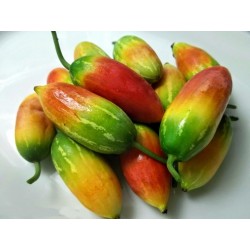
Ivy Gourd, Scarlet Gourd...
Price
€2.25
(SKU: VG 65)
Seeds Gallery EU,
5/
5
<h2 class=""><strong>Ivy Gourd, Scarlet Gourd Seeds (Coccinia grandis)</strong></h2>
<h2><span style="color: #ff0000;"><strong>Price for Package of 5 seeds.</strong></span></h2>
<p>Coccinia grandis, the ivy gourd, also known as scarlet gourd and Kowai, is a tropical vine. In Southeast Asia, it is grown for its edible young shoots and edible fruits.</p>
<p>This plant is a perennial climber with single tendrils and glabrous leaves. The leaves have 5 lobes and are 6.5–8.5 cm long and 7–8 cm wide. Female and male flowers emerge at the axils on the petiole, and have 3 stamens.</p>
<p><strong>Geographic spread</strong></p>
<p>Its native range extends from Africa to Asia, including India, the Philippines, Cambodia, China, Indonesia, Malaysia, Myanmar, Thailand, Vietnam, eastern Papua New Guinea, and the Northern Territories, Australia. Its documented introduced range includes the Federated States of Micronesia, Fiji, Guam, Saipan, Hawaii, the Marshall Islands, Samoa, Tonga, and Vanuatu.</p>
<p>Seeds or fragments of the vine can be relocated and lead to viable offspring. This can occur when humans transport organic debris or equipment containing C. grandis. Once the ivy gourd is established, it is presumably spread by birds, rats, and other mammals. In Hawaii, the fruit may be dispersed by pigs.[4] Long-distance dispersal is most commonly carried out by humans due to its culinary uses or by mistake. Regarded as very invasive and on the Hawaii State Noxious Weed List, ivy gourd can grow up to four inches per day. It grows in dense blankets, shading other plants from sunlight and highjacking nutrients, effectively killing vegetation underneath.[5] It was introduced to Hawaii as a backyard food crop. It is sometimes tolerated along garden fences and other outdoor features because of its attractive white flowers. It has escaped to become a vigorous pest in Hawaii, Florida, Australia, and Texas.</p>
<p><strong>Weed control</strong></p>
<p>Both physical and chemical recommendations are made for control of the ivy gourd. It is very difficult to control this plant physically except by bagging fruits. Hand-harvesting normally does not kill the plant, but rather breaks the vine blankets into smaller pieces and the plant is able to re-establish when it touches the ground. These methods can make the infestation worse and further the need for more rigorous control methods. Picking the fruit and placing them in plastic bags can help decrease the seed bank present with the soil. When using chemical controls, that ivy gourd responded well to a thin-lined bark application of 100% Garlon 4 (triclopyr), leaving plants in place so as not to translocate the herbicide or spread the pest.[4] It is applied multiple times until the vine dies. In Hawaii, several species of insect have been introduced with the purpose of being a biocontrol. Two weevils, Acythopeus burkhartorum and A. cocciniae, were introduced by the Department of Agriculture to Oahu and Hawaii. African vine moths were also released onto Oahu and Maui. On the island of Maui, the A. cocciniae apparently is established and damaging leaves. The larvae feed on the plant and the adults chew holes in the leaves. The moth has yet to appear successful in its purpose.</p>
<p><strong>Medicinal value</strong></p>
<p>In traditional medicine, fruits have been used to treat leprosy, fever, asthma, bronchitis, and jaundice. The fruit possesses mast cell-stabilizing, antianaphylactic, and antihistaminic potential. In Bangladesh, the roots are used to treat osteoarthritis and joint pain. A paste made of leaves is applied to the skin to treat scabies.</p>
<p>Ivy gourd extracts and other forms of the plant can be purchased online and in health food stores. These products are claimed to help regulate blood sugar levels. Some research supports that compounds in the plant inhibit glucose-6-phosphatase.[9] Glucose-6-phosphatase is one of the key liver enzymes involved in regulating sugar metabolism. Therefore, ivy gourd is sometimes recommended for diabetic patients. Although these claims have not been supported, a fair amount of research on the medicinal properties of this plant are focusing on its use as an antioxidant, antihypoglycemic agent, immune system modulator, etc. Some countries in Asia, such as Thailand, prepare traditional tonic-like drinks for medicinal purposes.</p>
<p><strong>Recipes</strong></p>
<p>A variety of recipes from all over the world list rashmato, the fruit, as the main ingredient. They are best when cooked, and are often compared to bitter melon. The fruit is commonly eaten in Indian cuisine. People of Indonesia and other Southeast Asian countries also consume the fruit and leaves. In Thai cuisine, it is one of the ingredients of the very popular clear soup dish kaeng jued tum lueng [10] and some curries kaeng khae curry and kaeng lieng curry.[11] Cultivation of rashmati in home gardens has been encouraged in Thailand due to it being a good source of several micronutrients, including vitamins A and C.</p>
<p>In India, it is eaten as a curry, by deep-frying it along with spices, stuffing it with masala and sauteing it, or boiling it first in a pressure cooker and then frying it. It is also used in sambar, a vegetable and lentil-based soup.</p>
<p><strong>Nutrition</strong></p>
<p>Ivy gourd is rich in beta-carotene.</p>
VG 65 (5 S)

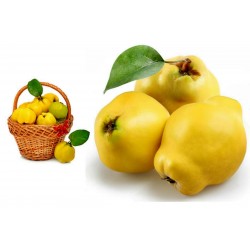
Quince Seeds (Cydonia oblonga)
Price
€1.95
(SKU: V 196)
Seeds Gallery EU,
5/
5
<meta http-equiv="Content-Type" content="text/html; charset=UTF-8" />
<h2><strong>Quince Seeds (Cydonia oblonga)</strong></h2>
<h2><span style="color: #ff0000;"><strong>Price for Package of 5 seeds.</strong></span></h2>
<p>The quince (/ˈkwɪns/; Cydonia oblonga) is the sole member of the genus Cydonia in the family Rosaceae (which also contains apples and pears, among other fruits). It is a small deciduous tree that bears a pome fruit, similar in appearance to a pear, and bright golden-yellow when mature. Throughout history the cooked fruit has been used as food, but the tree is also grown for its attractive pale pink blossoms and other ornamental qualities.</p>
<p> </p>
<p>The tree grows 5 to 8 metres (16 to 26 ft) high and 4 to 6 metres (13 to 20 ft) wide. The fruit is 7 to 12 centimetres (2.8 to 4.7 in) long and 6 to 9 centimetres (2.4 to 3.5 in) across.</p>
<p> </p>
<p>The immature fruit is green with dense grey-white pubescence, most of which rubs off before maturity in late autumn when the fruit changes color to yellow with hard, strongly perfumed flesh. The leaves are alternately arranged, simple, 6–11 cm (2–4 in) long, with an entire margin and densely pubescent with fine white hairs. The flowers, produced in spring after the leaves, are white or pink, 5 cm (2 in) across, with five petals.</p>
<p> </p>
<p>The seeds contain nitriles, which are common in seeds of the rose family. In the stomach, enzymes or stomach acid or both cause some of the nitriles to be hydrolyzed and produce hydrogen cyanide, which is a volatile gas. The seeds are only likely to be toxic if a large quantity is eaten.</p>
<p> </p>
<p><strong>Taxonomy</strong></p>
<p>Four other species previously included in the genus Cydonia are now treated in separate genera. These are Pseudocydonia sinensis and the three flowering quinces of eastern Asia in the genus Chaenomeles. Another unrelated fruit, the bael, is sometimes called the "Bengal quince".</p>
<p> </p>
<p>The modern name originated in the 14th century as a plural of quoyn, via Old French cooin from Latin cotoneum malum / cydonium malum, ultimately from Greek κυδώνιον μῆλον, kydonion melon "Kydonian apple".</p>
<p> </p>
<p><strong>Distribution and habitat</strong></p>
<p>Quince is native to rocky slopes and woodland margins in South-West Asia, Armenia, Turkey, Georgia and Iran[3] although it thrives in a variety of climates and can be grown successfully at latitudes as far north as Scotland. It should not be confused with its relatives, the Chinese quince, Pseudocydonia sinensis, or the flowering quinces of genus Chaenomeles, either of which is sometimes used as culinary substitutes.</p>
<p>The fruit was known to the Akkadians, who called it supurgillu; Arabic سفرجل al safarjal "quinces" (collective plural).</p>
<p> </p>
<p><strong>Pests and diseases</strong></p>
<p>Quince is used as a food plant by the larvae of some Lepidoptera species including brown-tail, Bucculatrix bechsteinella, Bucculatrix pomifoliella, Coleophora cerasivorella, Coleophora malivorella, green pug and winter moth.</p>
<p>While quince is a hardy shrub, it may develop fungal diseases in hot weather, resulting in premature leaf fall.[5] Quince leaf blight, caused by fungus Diplocarpon mespili, presents a threat in wet summers, causing severe leaf spotting and early defoliation, also affecting fruit to a lesser extent. It may also affect other Rosaceae plants such as hawthorn and medlar, but is typically less damaging than on quince.[6] Cedar-quince rust, caused by Gymnosporangium clavipes, requires two hosts to complete the fungal lifecycle, one being a cedar (most commonly a juniper, Juniperus virginiana) and the other a rosacea. Appearing as red excrescence on various parts of the plant, it may affect quinces grown in vicinity of junipers.</p>
<p> </p>
<p><strong>Cultivation</strong></p>
<p>Quince is a hardy, drought-tolerant shrub which adapts to many soils of low to medium pH. It tolerates both shade and sun, but sunlight is required in order to produce larger flowers and ensure fruit ripening. It is a very tough plant that does not require much maintenance, and tolerates years without pruning or major insect and disease problems.</p>
<p> </p>
<p>Quince is cultivated on all continents in warm-temperate and temperate climates. It requires a cooler period of the year, with temperatures under 7 °C (45 °F), to flower properly. Propagation is done by cuttings or layering; the former method produces better plants, but they take longer to mature than by the latter. Named cultivars are propagated by cuttings or layers grafted on quince rootstock. Propagation by seed is not used commercially. Quince forms thick bushes, which must be pruned and reduced into a single stem in order to grow fruit-bearing trees for commercial use. The tree is self-pollinated, but it produces better yields when cross-pollinated.</p>
<p> </p>
<p>Fruits are typically left on the tree to ripen fully. In warmer climates, it may become soft to the point of being edible, but additional ripening may be required in cooler climates. They are harvested in late autumn, before first frosts.</p>
<p>Quince is also used as rootstock for certain pear cultivars.</p>
<p>In Europe, quinces are commonly grown in central and southern areas where the summers are sufficiently hot for the fruit to fully ripen. They are not grown in large amounts; typically one or two quince trees are grown in a mixed orchard with several apples and other fruit trees: so were they grown in the 18th-century New England colonies, where there was always a quince at the lower corner of the vegetable garden, Ann Leighton notes in records of Portsmouth, New Hampshire and Newburyport, Massachusetts.[8] Charlemagne directed that quinces be planted in well-stocked orchards. Quinces in England are first recorded in about 1275, when Edward I had some planted at the Tower of London.</p>
<p> </p>
<p><strong>Uses</strong></p>
<p>Quinces are appreciated for their intense aroma and flavor. However, most varieties of quince are too hard and tart to be eaten raw; even ripe fruits should be subjected to bletting by frost or decay to be suitable for consumption. However, they may be cooked or roasted and used for jams, marmalade, jellies, or pudding.</p>
<p> </p>
<p><strong>As food</strong></p>
<p>Some varieties of quince, such as 'Aromatnaya' and 'Kuganskaya' do not require cooking and can be eaten raw.[13] However, most varieties of quince are too hard, astringent and sour to eat raw unless "bletted" (softened by frost and subsequent decay).[14] High in pectin, they are used to make jam, jelly and quince pudding, or they may be peeled, then roasted, baked or stewed; pectin levels diminish as the fruit ripens.[15] The flesh of the fruit turns red after a long cooking time. The very strong perfume means they can be added in small quantities to apple pies and jam to enhance the flavor. Adding a diced quince to apple sauce will enhance the taste of the apple sauce with the chunks of relatively firm, tart quince. The term "marmalade", originally meaning a quince jam, derives from marmelo, the Portuguese word for this fruit.</p>
<p> </p>
<p>Quince cheese is firm, sticky, sweet reddish hard paste made of the quince fruit, originating from the Iberian peninsula. It is known as dulce de membrillo across the Spanish-speaking world, where it is used in a variety of recipes, eaten in sandwiches and with cheese, traditionally manchego cheese, or accompanying fresh curds. It is also encountered in many regional variations across Europe. In Chile, boiled quince is popular in desserts such as the murta con membrillo that combines Chilean guava with quince.</p>
<p>In Kashmir, quinces are grown in abundance and are a seasonal fruit. They are called 'Bum-choonth' and are cooked with brinjals and enjoyed as a delicacy by Kashmiri Pundits.</p>
<p> </p>
<p><strong>As drink</strong></p>
<p>In the Balkans and elsewhere, quince eau-de-vie (rakija) is made. For a quince rakija, ripe fruits of sweeter varieties are washed and cleared from rot and seeds, then crushed or minced, mixed with cold or boiling sweetened water and winemaking yeast, and left for several weeks to ferment. Fermented mash is distilled twice to obtain an approximately 60% alcohol-by-volume (ABV) liquor. It may be diluted with distilled water to obtain the final product, containing 42-43% ABV.[18]</p>
<p>In the Alsace region of France and the Valais region of Switzerland, liqueur de coing made from quince is used as a digestif.</p>
<p>In Carolina in 1709, John Lawson allowed that he was "not a fair judge of the different sorts of Quinces, which they call Brunswick, Portugal and Barbary", but he noted "of this fruit they make a wine or liquor which they call Quince-Drink, and which I approve of beyond any that their country affords, though a great deal of cider and perry is there made, The Quince-Drink most commonly purges."</p>
<p> </p>
<p><strong>Ornamental</strong></p>
<p>Quince is one of the most popular species for deciduous bonsai specimens,[5] along with related Chinese quince and Japanese quince, native to Eastern Asia.</p>
<p> </p>
<p><img src="http://www.si-seeds.com/img/cms/EN_soak_in-water_for_24_hours_3_months_in_refrigerator.png" alt="" width="490" height="193" /></p>
V 196 (5 S)

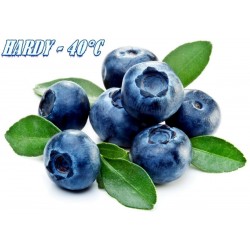
Blue huckleberry Seeds...
Price
€1.85
(SKU: V 194)
Seeds Gallery EU,
5/
5
<!DOCTYPE html>
<html>
<head>
<meta http-equiv="Content-Type" content="text/html; charset=UTF-8" />
</head>
<body>
<h2><strong>Blue huckleberry Seeds (Vaccinium Corymbosum)</strong></h2>
<h2><span style="color: #ff0000;"><strong>Price for Package of 50 (0,015g) seeds. </strong></span></h2>
<p>Other common names include blue huckleberry, tall huckleberry, swamp huckleberry, high blueberry, and swamp blueberry. Vaccinium corymbosum, the northern highbush blueberry, is a North American species of blueberry that has become a food crop of significant economic importance. It is native to eastern Canada and the eastern and southern United States, from Ontario east to Nova Scotia and south as far as Florida and eastern Texas. It is also naturalized in other places: Europe, Japan, New Zealand, the Pacific Northwest of North America, etc.</p>
<p>Vaccinium corymbosum is a deciduous shrub growing to 6–12 feet (1.8–3.7 m) tall and wide. It is often found in dense thickets. The dark glossy green leaves are elliptical and up to 5 centimeters (2.0 in) long. In autumn, the leaves turn to a brilliant red, orange, yellow, and/or purple.</p>
<p>The flowers are long bell- or urn-shaped white to very light pink, 0.33 inches (8.4 mm) long.</p>
<p>The fruit is a 0.25–0.5 inches (6.4–12.7 mm) diameter blue-black berry. This plant is found in wooded or open areas with moist acidic soils.</p>
<p>The species is tetraploid and does not self-pollinate.[9] Most cultivars have a chilling requirement greater than 800 hours.</p>
<h3><strong>History</strong></h3>
<p>Many wild species of Vaccinium are thought to have been cultivated by Native Americans for thousands of years, with intentional crop burnings in northeastern areas being apparent from archeological evidence.[9] V. corymbosum, being one of the species likely used by these peoples, was later studied and domesticated in 1908 by Frederick Vernon Coville.</p>
<h3><strong>Uses</strong></h3>
<p>In natural habitats, it is a food source for native and migrating birds, bears, and small mammals.</p>
<p>The berries were collected and used in Native American cuisine in areas where Vaccinium corymbosum grew as a native plant.</p>
<h3><strong>Cultivation</strong></h3>
<p>Vaccinium corymbosum is the most common commercially grown blueberry in present-day North America. It is also cultivated as an ornamental plant for home and wildlife gardens and natural landscaping projects.</p>
<h2><em><span style="color: #000000;"><strong>Germination instructions</strong></span></em></h2>
<p>Northern Highbush Blueberry (Vaccinium Corymbosum) – Soak the seeds in a small container of hand-hot water and leave to cool for 24 hours. Then sow the seeds on the surface of free-draining, damp, lime-free seed compost and only just cover with compost. 90 days cold stratification at approx 3C° is now required, which can be achieved by either, covering and placing outside in a cold shaded area, or by sealing the pot in a plastic bag and place in a refrigerator. Then move indoors or to a propagator at a minimum temperature of 21C°, until after germination. When large enough to handle, transplant individual seedlings into 9cm pots of ericaceous compost and grow on. Protect from frost. Plant outdoors from June onwards, after hardening off.</p>
</body>
</html>
V 194

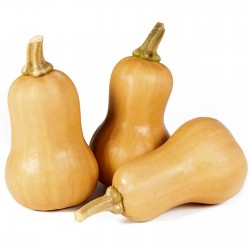
Small Fruited, Mini...
Price
€1.85
(SKU: VG 9)
Seeds Gallery EU,
5/
5
<h2><strong>Small Fruited Mini Butternut Squash Seeds</strong></h2>
<h2><span style="color:#ff0000;"><strong>Price for Package of 5 seeds.</strong></span></h2>
<p>This adorable small-fruited butternut squash has an exceptionally sweet taste perfect for just one or two servings. Compact vines are space-saving for smaller gardens or those who just want to fit more plants into the space they have. This is another AAS Winners that is perfect for container gardens and will resist powdery mildew later in the season. Culinary tip: pierce the skin then microwave whole squash for about 12 minutes, cut in half, spoon out the seeds, and enjoy!</p>
<table cellspacing="0" cellpadding="0" border="1" style="width:753px;"><tbody><tr><td colspan="2" valign="bottom" style="width:749px;">
<p align="center"><strong>AAS Winner Primary Details</strong></p>
</td>
</tr><tr><td valign="top" style="width:247px;text-align:left;">
<p align="right" style="text-align:left;">Award:</p>
</td>
<td valign="top" style="width:500px;">
<p>AAS Vegetable Award Winner</p>
</td>
</tr><tr><td valign="top" style="width:247px;text-align:left;">
<p align="right" style="text-align:left;">Award Type:</p>
</td>
<td valign="top" style="width:500px;">
<p>National Winner</p>
</td>
</tr><tr><td valign="top" style="width:247px;text-align:left;">
<p align="right" style="text-align:left;">Class:</p>
</td>
<td valign="top" style="width:500px;">
<p>Squash</p>
</td>
</tr><tr><td valign="top" style="width:247px;text-align:left;">
<p align="right" style="text-align:left;">Variety Name:</p>
</td>
<td valign="top" style="width:500px;">
<p>Butterscotch</p>
</td>
</tr><tr><td valign="top" style="width:247px;text-align:left;">
<p align="right" style="text-align:left;">Genus:</p>
</td>
<td valign="top" style="width:500px;">
<p>Cucurbita</p>
</td>
</tr><tr><td valign="top" style="width:247px;">
<p align="right" style="text-align:left;">Species:</p>
</td>
<td valign="top" style="width:500px;">
<p>moschata</p>
</td>
</tr><tr><td valign="top" style="width:247px;">
<p align="right" style="text-align:left;">Year:</p>
</td>
<td valign="top" style="width:500px;">
<p>2015</p>
</td>
</tr><tr><td valign="top" style="width:247px;">
<p align="right" style="text-align:left;">Common Name:</p>
</td>
<td valign="top" style="width:500px;">
<p>Butternut squash</p>
</td>
</tr><tr><td valign="top" style="width:247px;">
<p align="right" style="text-align:left;">Type:</p>
</td>
<td valign="top" style="width:500px;">
<p>Vegetables</p>
</td>
</tr><tr><td valign="top" style="width:247px;">
<p align="right" style="text-align:left;">Breeder:</p>
</td>
<td valign="top" style="width:500px;">
<p>Seeds Gallery</p>
</td>
</tr><tr><td valign="top" style="width:247px;">
<p align="right" style="text-align:left;">Close Market Comparison:</p>
</td>
<td valign="top" style="width:500px;">
<p>Early Butternut, Metro</p>
</td>
</tr><tr><td colspan="2" valign="bottom" style="width:749px;">
<p align="center"><strong>Plant Needs</strong></p>
</td>
</tr><tr><td valign="top" style="width:247px;text-align:left;">
<p align="right" style="text-align:left;">Duration Type:</p>
</td>
<td valign="top" style="width:500px;text-align:left;">
<p>Annual</p>
</td>
</tr><tr><td valign="top" style="width:247px;text-align:left;">
<p align="right" style="text-align:left;">Light Needs:</p>
</td>
<td valign="top" style="width:500px;text-align:left;">
<p>Full sun</p>
</td>
</tr><tr><td valign="top" style="width:247px;text-align:center;">
<p align="right" style="text-align:left;">Water Needs:</p>
</td>
<td valign="top" style="width:500px;text-align:left;">
<p>Normal</p>
</td>
</tr><tr style="text-align:left;"><td valign="top" style="width:247px;text-align:left;">
<p align="right" style="text-align:left;">Season Type:</p>
</td>
<td valign="top" style="width:500px;text-align:left;">
<p>Warm Season</p>
</td>
</tr><tr style="text-align:left;"><td valign="top" style="width:247px;text-align:center;">
<p align="right" style="text-align:left;">Staking Required:</p>
</td>
<td valign="top" style="width:500px;text-align:center;">
<p style="text-align:left;">NO</p>
</td>
</tr></tbody></table><p style="text-align:left;"> </p>
<table cellspacing="0" cellpadding="0" border="1" style="width:747px;height:1022px;"><tbody><tr style="text-align:left;"><td colspan="2" valign="bottom" style="width:743px;height:58px;">
<p align="center"><strong>Plant Characteristics</strong></p>
</td>
</tr><tr style="text-align:left;"><td valign="top" style="width:251px;text-align:left;height:58px;">
<p align="right" style="text-align:left;">Foliage Color:</p>
</td>
<td valign="top" style="width:490px;text-align:left;height:58px;">
<p>Green</p>
</td>
</tr><tr style="text-align:left;"><td valign="top" style="width:251px;text-align:left;height:58px;">
<p align="right" style="text-align:left;">Plant Habit:</p>
</td>
<td valign="top" style="width:490px;text-align:left;height:58px;">
<p>Compact</p>
</td>
</tr><tr style="text-align:left;"><td valign="top" style="width:251px;text-align:left;height:58px;">
<p align="right" style="text-align:left;">Garden Spacing:</p>
</td>
<td valign="top" style="width:490px;text-align:left;height:58px;">
<p>5-6 square feet per plant (example: 1'x5' or 2'x3')</p>
</td>
</tr><tr style="text-align:left;"><td valign="top" style="width:251px;text-align:left;height:58px;">
<p align="right" style="text-align:left;">Days To Harvest (Sowing Seed):</p>
</td>
<td valign="top" style="width:490px;text-align:left;height:58px;">
<p>100 days</p>
</td>
</tr><tr style="text-align:left;"><td valign="top" style="width:251px;text-align:left;height:58px;">
<p align="right" style="text-align:left;">Days To Harvest (Transplant):</p>
</td>
<td valign="top" style="width:490px;text-align:left;height:58px;">
<p>85 days</p>
</td>
</tr><tr style="text-align:left;"><td valign="top" style="width:251px;text-align:left;height:58px;">
<p align="right" style="text-align:left;">Fruit Color (Harvest):</p>
</td>
<td valign="top" style="width:490px;text-align:left;height:58px;">
<p>Tan</p>
</td>
</tr><tr style="text-align:left;"><td valign="top" style="width:251px;text-align:left;height:58px;">
<p align="right" style="text-align:left;">Fruit Shape:</p>
</td>
<td valign="top" style="width:490px;text-align:left;height:58px;">
<p>Butternut with straight neck</p>
</td>
</tr><tr style="text-align:left;"><td valign="top" style="width:251px;height:58px;text-align:left;">
<p align="right" style="text-align:left;">Fruit Size:</p>
</td>
<td valign="top" style="width:490px;height:58px;text-align:left;">
<p>Lenght 15 cm</p>
</td>
</tr><tr style="text-align:left;"><td valign="top" style="width:251px;height:58px;text-align:left;">
<p align="right" style="text-align:left;">Fruit Weight:</p>
</td>
<td valign="top" style="width:490px;height:58px;text-align:left;">
<p>500-750 g</p>
</td>
</tr><tr style="text-align:left;"><td valign="top" style="width:251px;height:76px;text-align:left;">
<p align="right" style="text-align:left;">Fruit Flavor Description:</p>
</td>
<td valign="top" style="width:490px;height:76px;text-align:left;">
<p>Uncommonly sweet, with nutty undertones and lightly starchy texture</p>
</td>
</tr><tr style="text-align:left;"><td valign="top" style="width:251px;height:58px;text-align:left;">
<p align="right" style="text-align:left;">The Number Of Fruits Per Plant:</p>
</td>
<td valign="top" style="width:490px;height:58px;text-align:left;">
<p>4 or more</p>
</td>
</tr><tr style="text-align:left;"><td valign="top" style="width:251px;height:58px;text-align:left;">
<p align="right" style="text-align:left;">Plant Spread:</p>
</td>
<td valign="top" style="width:490px;height:58px;text-align:left;">
<p>3 feet</p>
</td>
</tr><tr style="text-align:left;"><td valign="top" style="width:251px;height:76px;text-align:left;">
<p align="right" style="text-align:left;">Disease Resistances or Tolerances:</p>
</td>
<td valign="top" style="width:490px;height:76px;text-align:left;">
<p>Powdery mildew</p>
</td>
</tr><tr style="text-align:left;"><td colspan="2" valign="bottom" style="width:743px;height:58px;">
<p align="center"><strong>Home Gardener Use</strong></p>
</td>
</tr><tr style="text-align:left;"><td valign="top" style="width:251px;height:58px;">
<p align="right" style="text-align:left;">Container:</p>
</td>
<td valign="top" style="width:490px;height:58px;">
<p>YES</p>
</td>
</tr><tr style="height:58px;"><td valign="top" style="width:251px;text-align:left;height:58px;">
<p align="right" style="text-align:left;">Herb:</p>
</td>
<td valign="top" style="width:490px;height:58px;">
<p style="text-align:left;">NO</p>
</td>
</tr></tbody></table><p><strong>How to Grow</strong></p>
<p>Transplant: Sow 1-2 seeds in 1 1/2-2” cell-type containers or pots, and thin to 1-2 plants/cell with scissors. Harden plants 4-7 days by reducing fertilizer, water, and temperature, moving flats outside if there is no frost danger. Transplant after frost danger, earlier only if plants are to be covered with floating row covers, about 18” apart. Take care not to disturb roots! </p>
<p>Direct seed: Sow in late spring when soil is at least 70°F (21°C) and weather settled after all frost danger. Sow 2 seeds/ft., 1" deep, in rows 3' apart. Thin plants 24" apart in the row.</p>
<p>Harvest: When stems are drying, fruits have mature color, and skin is hardening, cut stems about 1" from the fruits. Handle fruits very carefully. 1 or 2 light frosts are tolerable, but a hard frost or repeated light frosts will damage fruits. </p>
<p>Curing: To dry and toughen skins, expose fruits to the sun for 5-10 days, covering at night when frost is expected. To cure indoors, expose squash to 80-90°F (27-32°C) with ventilation for 3-5 days. </p>
<p>Storage: Store at 50-55°F (10-13°C) with 50-75% humidity and good air circulation.</p>
<p>Diseases and pests: At time of planting, cover with row cover to protect from insect pests. Control cucumber beetles, squash bugs, and vine borers with azadirachtin or pyrethrin. Control of cucumber beetles early in the season is important, as the insects spread bacterial wilt disease. Prevent disease with crop rotation and good sanitation. </p>
VG 9 (5 S)


Plant resistant to cold and frost
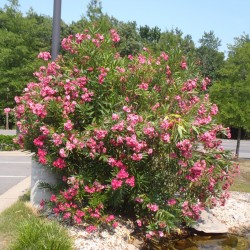
Rose Bay - Rose Laurel...
Price
€1.95
(SKU: T 62)
Seeds Gallery EU,
5/
5
<!DOCTYPE html>
<html>
<head>
<meta http-equiv="Content-Type" content="text/html; charset=UTF-8" />
</head>
<body>
<h2><strong>Rose Bay - Rose Laurel Seeds (Nerium oleander)</strong></h2>
<h2><span style="color: #ff0000;"><strong>Price for Package of 10 seeds.</strong></span></h2>
<p>Undoubtedly a candidate for the most poisonous plant in the garden but also a contender for most beautiful.</p>
<p>This species is considered to be native to Spain, the Balearic Islands, and Morocco east through Mediterranean coastal countries to the Arabian Peninsula, Ethiopia, Niger, Afghanistan, Iran, and Iraq to India and central China. It occurs as a non-native in parts of Africa, the Azores, Japan, Indonesia, Australia, New Zealand, the United States, central and eastern Mexico, Central, and South America.</p>
<p>This species is very widely cultivated as an ornamental. All parts of the plant are poisonous and so it is not grazed or eaten. Steam from boiled leaves is inhaled to relieve sinusitis, pounded leaves are applied to the skin to relieve itching, ulcers, and tumors (Jongbloed 2003); the leaves are used as an insecticide.</p>
<p>Nerium</p>
<p>Believed to come from the Greek ‘nerion’ which is, itself, believed to be based on ‘neros’, ‘wet’ or ‘fresh’.</p>
<p>oleander</p>
<p>Possibly a combination of the Latin ‘olea’, ‘olive’ and ‘rodandrum’, ‘rhododendron’ meaning the plant looks somewhat similar to a cross between these two.</p>
<p>Common Names and Synonyms</p>
<p>oleander, rosebay, common oleander, rose laurel</p>
<h2>WIKIPEDIA:</h2>
<p>Nerium oleander /ˈnɪəriəm ˈoʊliː.ændər/[3] is an evergreen shrub or small tree in the dogbane family Apocynaceae, toxic in all its parts. It is the only species currently classified in the genus Nerium. It is most commonly known as oleander, from its superficial resemblance to the unrelated olive Olea.[Note 1] It is so widely cultivated that no precise region of origin has been identified, though southwest Asia has been suggested. The ancient city of Volubilis in Morocco may have taken its name from the Berber name built for the flower.[4] Oleander is one of the most poisonous commonly grown garden plants.</p>
<p><strong>Description</strong></p>
<p>Oleander grows to 2–6 m (6.6–19.7 ft) tall, with erect stems that splay outward as they mature; first-year stems have a glaucous bloom, while mature stems have a grayish bark. The leaves are in pairs or whorls of three, thick and leathery, dark-green, narrowly lanceolate, 5–21 cm (2.0–8.3 in) long and 1–3.5 cm (0.39–1.38 in) broad, and with an entire margin. The flowers grow in clusters at the end of each branch; they are white, pink to red,[Note 2] 2.5–5 cm (0.98–1.97 in) diameter, with a deeply 5-lobed fringed corolla round the central corolla tube. They are often, but not always, sweet-scented.[Note 3] The fruit is a long narrow capsule 5–23 cm (2.0–9.1 in) long, which splits open at maturity to release numerous downy seeds.</p>
<p><strong>Habitat and range</strong></p>
<p>N. oleander is either native or naturalized to a broad area from Mauritania, Morocco, and Portugal eastward through the Mediterranean region and the Sahara (where it is only found sporadically), to the Arabian peninsula, southern Asia, and as far East as Yunnan in southern parts of China.[5][6][7][8] It typically occurs around dry stream beds. Nerium oleander is planted in many subtropical and tropical areas of the world. On the East Coast of the US, it grows as far north as Virginia Beach, Virginia, while in California and Texas it is naturalized as a median strip planting.[citation needed] Because of its durability, Oleander was planted prolifically on Galveston Island in Texas after the disastrous Hurricane of 1900. They are so prolific that Galveston is known as the 'Oleander City'; an annual Oleander festival is hosted every spring.[9] Oleander can be grown successfully outdoors in southern England, particularly in London and mild coastal regions of Dorset and Cornwall.</p>
<p><strong>Ecology</strong></p>
<p>Some invertebrates are known to be unaffected by oleander toxins, and feed on the plants. Caterpillars of the polka-dot wasp moth (Syntomeida epilais) feed specifically on oleanders and survive by eating only the pulp surrounding the leaf-veins, avoiding the fibers. Larvae of the common crow butterfly (Euploea core) also feed on oleanders, and they retain or modify toxins, making them unpalatable to would-be predators such as birds, but not to other invertebrates such as spiders and wasps.</p>
<p>The flowers require insect visits to set seed and seem to be pollinated through a deception mechanism. The showy corolla acts as a potent advertisement to attract pollinators from a distance, but the flowers are nectarless and offer no reward to their visitors. They therefore receive very few visits, as typical of many rewardless flower species.[11][12] Fears of honey contamination with toxic oleander nectar are therefore unsubstantiated.</p>
<p><strong>Ornamental gardening</strong></p>
<p>Oleander is a vigorous grower in warm subtropical regions, where it is extensively used as an ornamental plant in parks, along roadsides, and as a windbreak. It will tolerate occasional light frost down to −10 °C (14 °F).,[8] though the leaves may be damaged. The toxicity of Oleander renders it deer-resistant. The plant is tolerant of poor soils, salt spray, and sustained drought, although it will flower and grow more vigorously with regular water. Nerium Oleander also responds well to heavy pruning, which should be done in the autumn or early spring to keep plants from becoming unruly.</p>
<p>In cold-winter climates Oleander can be grown in greenhouses and conservatories, or as potted indoor plants that can be kept outside in the summer. Oleander flowers are showy, profuse, and often fragrant, which makes them very attractive in many contexts. Over 400 cultivars have been named, with several additional flower colors not found in wild plants having been selected, including red, pink, yellow, and salmon; white and a variety of pinks are the most common. Double flowered cultivars like 'Mrs Isadore Dyer' or 'Mont Blanc' are enjoyed for their large, rose-like blooms and strong fragrance. Many dwarf cultivars have also been developed, which grow only to about 10' at maturity. In most Mediterranean climates they can be expected to bloom from April through October, with their heaviest bloom usually in May or June.</p>
<p><strong>Toxicity</strong></p>
<p>Oleander has historically been considered a poisonous plant because some of its compounds may exhibit toxicity, especially to animals, when consumed in large amounts. Among these compounds are oleandrin and oleandrigenin, known as cardiac glycosides, which are known to have a narrow therapeutic index and can be toxic when ingested.</p>
<p>Toxicity studies of animals administered oleander extract concluded that rodents and birds were observed to be relatively insensitive to oleander cardiac glycosides.[16] Other mammals, however, such as dogs and humans, are relatively sensitive to the effects of cardiac glycosides and the clinical manifestations of "glycoside intoxication".</p>
<p>However, despite the common "poisonous" designation of this plant, very few toxic events in humans have been reported. According to the Toxic Exposure Surveillance System, in 2002, 847 human exposures to oleander were reported to poison centers in the United States.[19] Despite this exposure level, from 1985 through 2005, only three deaths were reported. One cited death was apparently due to the ingestion of oleander leaves by a diabetic man.[20] His blood indicated a total blood concentration of cardiac glycosides of about 20 μg/l, which is well above the reported fatal level. Another study reported on the death of a woman who self-administered "an undefined oleander extract" both orally and rectally and her oleandrin tissue levels were 10 to 39 μg/g, which were in the high range of reported levels at autopsy.[21] And finally, one study reported the death of a woman who ingested oleander 'tea'.[22] Few other details were provided.</p>
<p>In contrast to consumption of these undefined oleander-derived materials, no toxicity or deaths were reported from topical administration or contact with N. oleander or specific products derived from them. In reviewing oleander toxicity, Lanford and Boor[23] concluded that, except for children who might be at greater risk, "the human mortality associated with oleander ingestion is generally very low, even in cases of moderate intentional consumption (suicide attempts)".</p>
<p>Toxicity studies conducted in dogs and rodents administered oleander extracts by intramuscular injection indicated that, on an equivalent weight basis, doses of an oleander extract with glycosides 10 times those likely to be administered therapeutically to humans are still safe and without any "severe toxicity observed".</p>
<p>In South Indian states such as Tamil Nadu and in Sri Lanka the seeds of related plant with similar local name (Kaneru(S) කණේරු) Cascabela thevetia produce a poisonous plum with big seeds. As these seeds contain cardenolides, swallowing them is one of the preferred methods for suicides in villages.</p>
<p><strong>Effects of poisoning</strong></p>
<p>Ingestion of this plant can affect the gastrointestinal system, the heart, and the central nervous system. The gastrointestinal effects can consist of nausea and vomiting, excess salivation, abdominal pain, diarrhea that may contain blood, and especially in horses, colic.[7] Cardiac reactions consist of irregular heart rate, sometimes characterized by a racing heart at first that then slows to below normal further along in the reaction. Extremities may become pale and cold due to poor or irregular circulation. The effect on the central nervous system may show itself in symptoms such as drowsiness, tremors or shaking of the muscles, seizures, collapse, and even coma that can lead to death.</p>
<p>Oleander sap can cause skin irritations, severe eye inflammation and irritation, and allergic reactions characterized by dermatitis.</p>
<p><strong>Treatment</strong></p>
<p>Poisoning and reactions to oleander plants are evident quickly, requiring immediate medical care in suspected or known poisonings of both humans and animals.[25] Induced vomiting and gastric lavage are protective measures to reduce absorption of the toxic compounds. Charcoal may also be administered to help absorb any remaining toxins.[7] Further medical attention may be required depending on the severity of the poisoning and symptoms. Temporary cardiac pacing will be required in many cases (usually for a few days) until the toxin is excreted.</p>
<p>Digoxin immune fab is the best way to cure an oleander poisoning if inducing vomiting has no or minimal success, although it is usually used only for life-threatening conditions due to side effects.</p>
<p>Drying of plant materials does not eliminate the toxins. It is also hazardous for animals such as sheep, horses, cattle, and other grazing animals, with as little as 100 g being enough to kill an adult horse.[26] Plant clippings are especially dangerous to horses, as they are sweet. In July 2009, several horses were poisoned in this manner from the leaves of the plant.[27] Symptoms of a poisoned horse include severe diarrhea and abnormal heartbeat. There is a wide range of toxins and secondary compounds within oleander, and care should be taken around this plant due to its toxic nature. Different names for oleander are used around the world in different locations, so, when encountering a plant with this appearance, regardless of the name used for it, one should exercise great care and caution to avoid ingestion of any part of the plant, including its sap and dried leaves or twigs. The dried or fresh branches should not be used for spearing food, for preparing a cooking fire, or as a food skewer. Many of the oleander relatives, such as the desert rose (Adenium obesum) found in East Africa, have similar leaves and flowers and are equally toxic.</p>
<p><strong>Folklore</strong></p>
<p>The alleged toxicity of the plant makes it the center of an urban legend documented on several continents and over more than a century. Often told as a true and local event, typically an entire family, or in other tellings a group of scouts, succumbs after consuming hot dogs or other food roasted over a campfire using oleander sticks.</p>
<p><strong>Garden history</strong></p>
<p>In his book Enquiries into Plants of circa 300 BC, Theophrastus described (among plants that affect the mind) a shrub he called onotheras, which modern editors render oleander; "the root of onotheras [oleander] administered in wine", he alleges, "makes the temper gentler and more cheerful".</p>
<p>The plant has a leaf like that of the almond, but smaller, and the flower is red like a rose. The plant itself (which loves hilly country) forms a large bush; the root is red and large, and, if this is dried, it gives off a fragrance like wine.</p>
<p>In another mention, of "wild bay" (Daphne agria), Theophrastus appears to intend the same shrub.</p>
<p>Oleander was a very popular ornamental shrub in Roman peristyle gardens; it is one of the flora most frequently depicted on murals in Pompeii and elsewhere in Italy. These murals include the famous garden scene from the House of Livia at Prima Porta outside Rome, and those from the House of the Wedding of Alexander and the Marine Venus in Pompeii.</p>
<p>Willa Cather, in her book The Song of the Lark, mentions oleander in this passage:</p>
<p>This morning Thea saw to her delight that the two oleander trees, one white and one red, had been brought up from their winter quarters in the cellar. There is hardly a German family in the most arid parts of Utah, New Mexico, Arizona, but has its oleander trees. However loutish the American-born sons of the family may be, there was never one who refused to give his muscle to the back-breaking task of getting those tubbed trees down into the cellar in the fall and up into the sunlight in the spring. They may strive to avert the day, but they grapple with the tub at last.</p>
<p>Oleander is the official flower of the city of Hiroshima, having been the first to bloom following the atomic bombing of the city in 1945.</p>
<p>It is the provincial flower of Sindh province.</p>
</body>
</html>
T 62 P

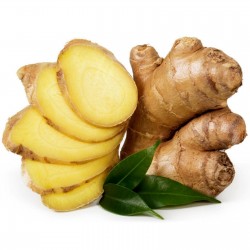
Ginger Tubers - Rhizomes...
Price
€8.55
(SKU: MHS 14)
Seeds Gallery EU,
5/
5
<h2><span style="color: #000000;"><strong>Ginger </strong><strong>Tubers - </strong><strong>Rhizomes (Zingiber officinale)</strong></span></h2>
<h2><span style="color: #ff0000;"><strong>Price for Package of 5 Tubers.</strong></span></h2>
<p>Ginger is a well-known spice produced from the rhizome (underground stem) of the tropical herbaceous plant, Zingiber officinale.</p>
<p>Zingiber officinale is best known as the source of the pungent, aromatic spice called ginger. This spice is produced from the rhizome (underground stem) of the plant.</p>
<p>Obtained by the Greeks and Romans from Arab traders, it was one of the first oriental spices to arrive in Europe. Other spices in the ginger family (Zingiberaceae) include cardamom (Elettaria cardamomum) and turmeric (Curcuma longa).</p>
<p>Ginger has many medicinal uses. The fresh or dried rhizome is used in oral or topical preparations to treat a variety of ailments, while the essential oil is applied topically as an analgesic. Evidence suggests ginger is most effective against nausea and vomiting associated with surgery, vertigo, travel sickness and morning sickness. However, the safe use of ginger during pregnancy is questionable and pregnant women should exercise caution before taking it. The topical use of ginger may cause allergic reactions.</p>
<p><strong>Synonym: </strong></p>
<p>Amomum zingiber L., Zingiber missionis Wall. (for full list see the World Checklist of Selected Plant Families)</p>
<p><strong>Genus: </strong></p>
<p>Zingiber</p>
<p><strong>Geography and distribution</strong></p>
<p>Zingiber officinale is possibly native to India. It is widely grown as a commercial crop in south and southeast Asia, tropical Africa (especially Sierra Leone and Nigeria), Latin America, the Caribbean (especially Jamaica) and Australia.</p>
<p><strong>Underground parts: </strong></p>
<p>Ginger has a distinctive thickened, branched rhizome (underground stem) which sometimes looks somewhat like a swollen hand. The rhizome has a brown corky outer layer (usually removed before use) and a pale yellow centre with a spicy lemon-like scent.</p>
<p><strong>Leaves: </strong></p>
<p>Shoots (pseudostems), up to 1.2 m tall, arise annually from buds on the rhizome. These pseudostems are formed from a series of leaf bases (sheaths) wrapped tightly around one another with the long (up to 7 cm), narrow (up to 1.9 cm wide), mid-green leaf blades arranged alternately.</p>
<p><strong>Flowers: </strong></p>
<p>The flowering heads, borne on separate shorter stems, are cone-shaped spikes and composed of a series of greenish to yellowish leaf-like bracts. Protruding just beyond the outer edge of the bracts, the flowers are pale yellow in color with a purplish lip that has yellowish dots and striations. Flowering stems are rarely if ever, produced in cultivated plants.</p>
<p><strong>Uses</strong></p>
<p>The aromatic rhizome of Zingiber officinale is the source of ginger, a spice used for centuries to add flavour in cooking. In Asia, the fresh stem is an essential ingredient of many dishes, whereas the dried, powdered spice is more popular in European cooking. Gingerbread, one of the most popular uses for ginger in Britain, dates to Anglo-Saxon times when preserved ginger (produced by boiling the rhizome in sugar syrup) was used, often medicinally.</p>
<p>Crystallised ginger, a sweetmeat traditionally eaten as a delicacy at Christmas, is prepared by coating dried, preserved ginger with sugar. Ginger oil, the oleoresin, is used to flavor ginger beer and ginger ale and is commonly used as an ingredient in perfumery, cosmetics, and medicines.</p>
<p>The pungent principles in ginger are the non-volatile phenolic compounds gingerol, gingeridioneandshogaol.</p>
<p><strong>Cultivation</strong></p>
<p>Ginger probably originated as part of the ground flora of tropical lowland forests, where many of its wild relatives can still be found. In cultivation it requires hot, humid, shady conditions and grows best in a fertile loam as it needs large quantities of nutrients.</p>
<p>Zingiber officinale has been successfully propagated at Kew using internodal cuttings. The cuttings are placed in a shallow pot in a mixture of coir and perlite. The pot is placed in a misting unit (or, if not available, in a closed glass case), which is heated at the base to 20 ˚C. It takes time for any activity to become visible, but eventually, new roots and shoots are produced. It has been noted that this method produces vigorous plants. The traditional technique for propagation of ginger is by division.</p>
<p>Mature plants are grown in the behind-the-scenes Tropical Nursery at Kew, in a zone that is kept at a temperature of 18-25 ˚C and at high humidity (70-90 % RH). The plants are watered daily throughout most of the year. In the winter they can be watered less often, as long as they are kept moist. They are fed fortnightly with nitrogen, phosphorus & potassium mix and calcium nitrate.</p>
<p>In winter the older pseudostems are removed from the plants, and the new ones allowed to grow up. At this stage, the new pseudostems may need staking, but usually, they are strong enough to support themselves. Occasionally mealy bug and red spider mite cause problems. Where possible these pests are removed by hand.</p>
<p><strong>This species at Kew</strong></p>
<p>Zingiber officinale can be seen in Kew's Palm House, alongside other plants from Southeast Asia.</p>
<p>Various members of the ginger family are grown in the hot moist section of the Princess of Wales Conservatory.</p>
<p>Pressed and dried specimens of Zingiber officinale are held in Kew’s Herbarium where they are available to researchers by appointment. The details of one of these specimens can be seen online in Kew’s Herbarium Catalogue.</p>
<p>Specimens of ginger are held in Kew’s Economic Botany Collection in the Sir Joseph Banks Building, where they are available to researchers by appointment.</p><script src="//cdn.public.n1ed.com/G3OMDFLT/widgets.js"></script>
MHS 14 (5 T)

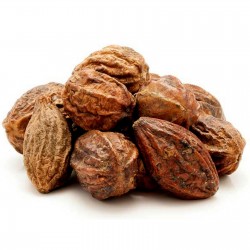
King of medicinal herbs...
Price
€4.95
(SKU: V 186)
Seeds Gallery EU,
5/
5
<meta http-equiv="Content-Type" content="text/html; charset=UTF-8" />
<h2><strong>King of medicinal herbs Myrobalan Seeds (Terminalia chebula)</strong></h2>
<h2><span style="color: #ff0000;"><strong>Price for Package of 1 seeds.</strong></span></h2>
<p>Myrobalan Recognized as the King of Herbs. Because the effect of the removal of toxins from the body and treat many diseases. The same can also be healthy. And repair of the body.</p>
<p>Terminalia chebula, also known as haritaki fruit and He Zi herb, is a common herb used in Traditional Chinese medicine, Tibetan medicine, and Ayurveda medicine. It has had very good reviews from different alternative medicine genres, especially in Tibetan medicine, in which it is called as the King. And related statistical analysis showed that its frequency of utilization in Tibetan medicine is higher than that of Gan Cao (Licorice Root) in TCM. That’s to say, almost all Tibetan herbal formulas include this herb. It is native to India, Burma and other countries and was introduced to China as an astringent before the Tang Dynasty, according to Tang Ben Cao (Tang Materia Medica), a revised text compiled in 657-659 A.D.</p>
<h2>What is terminalia chebula?</h2>
<p>Medicinally it refers to the dried ripe fruits of Terminalia chebula Retz. or Terminalia chebula Retz. var. tomentella Kurt., plants that belong to the family of Combretaceae. Therefore, its common names include Myrobalan fruit, fructus chebulae, medicine terminalia fruit, chebula fruit, fructus terminaliae chebulae, Sheng He Li Le, terminalia chebulae fructus, Ke Zi, Sheng He Zi Rou, fruit of medicine terminalia, haritaki fruit, chebulic myrobalan, and more.</p>
<p>Its plant is a large deciduous tree and often reaches 20 to 30 meters. Leaves are alternate or nearly opposite, ovate or elliptic, 7 to 2cm long, 3 to 15cm wide, with short pointed apex, obtuse or rounded base, entire margin, and bald clean sides. Spica grows on the top of branches or leaf axil. Flowers are bisexual and yellow. Drupe is obovate or oval, 2.5 to 4.5cm long, green when young, tan when ripe, and with smooth surface and 5 edges when dried. Seed is 1. And it usually flowers from June to August and fruits from August to October. The habitat and distribution covers roadsides and areas near villages. It originates in India, Burma, and other places. In China, it mainly grows in Tibet, Yunnan, Guangdong, and Guangxi.</p>
<p>Key chemical constituents include 23.60% to 37.36% tannin, triterpenoids, sennoside A, chebulin, tannase, polyphenol oxidase, ascorbic acid enzyme, and so on. And tannin mainly contains chebulinic acid, chebulagic acid, corilagin, terchebulin, punicalagin, terflavin A, terchebin, glucogallin, gallic acid, and so on. In addition, triterpenoids mainly contains terminoic acid, chebupentol, shikimic acid, dehydroshikimic acid, and more.</p>
<p> </p>
<p><strong>Terminalia chebula benefits</strong></p>
<p>As what mentioned before, it is one of the most common Chinese herbs and was known as the King in the medical classic of Tibetan Pharmaceutical Science – Jing Zhu Ben Cao (Tibetan title: Shel. Gong Shel Phreng). As a matter of fact, its health benefits have been the major subject of Tibetan medicine and it has become a symbol of Tibetan medicine thanks to its widespread medicinal uses. What’s more, in Tibetan medicine this herb is considered with all the merits, namely six flavors, eight properties, three processing tastes, and seventeen efficiency, that treat a variety of diseases. In fact, today because of its high medicinal value and properties, terminalia chebula bark and fruit have been made into tea, fruit extract, oil, supplement, and tincture for hair, lyme disease, skin care, cancer, cystic fibrosis, diabetes, weight loss, vitiligo, and so on. So, what is the explanation in its pharmacology? Now let’s take a close look at it.</p>
<p> </p>
<p><strong>Modern pharmacological actions of chebula fruit</strong></p>
<p>1. Its tannin has astringent, antidiarrheal effect;</p>
<p>2. In addition to tannin, it also contains lapactic composition, which has the similar effect available on Da Huang (Rhubarb);</p>
<p>3. Its 100% decoction works to a variety of Shigella and has strong effect on Pseudomonas aeruginosa and diphtheria bacilli. Besides, it inhibits Staphylococcus aureus, Escherichia coli, pneumococcus, hemolytic streptococcus, Proteus, and Salmonella typhimurium;</p>
<p>4. Its alcohol extract with hydrochloric acid and ether has stronger antifungal and antimicrobial activity;</p>
<p>5. Cardiotonic effect shows on the extract of ethyl acetate, methyl ethyl ketone, n-butanol and water and large dose of benzene and chloroform extract;</p>
<p>5. The active ingredient of chebulin, extracted from dried fruits with 80% ethanol, has papaverine-like spasmolysis on smooth muscle.</p>
<p> </p>
<p><strong>Proven herbal remedies on medicine terminalia fruit</strong></p>
<p>From the description of Chinese Materia Medica, it is bitter and sour in flavor and astringent and neutral in properties. It goes to three meridians of lung, large intestine, and stomach. Vital functions include astringing the lung and intestine, descending qi, and relieving sore throat. Chief terminalia chebula uses and indications are chronic diarrhea, chronic dysentery, prolapse of the anus, wheezing, expectoration, and aphonia caused by chronic cough. Recommended terminalia chebula dosage is from 3 to 6 grams in decoction, pills or powder.</p>
<p>1. He Zi Yin. This formula, from Ji sheng fang (Formulas to Aid the Living), is exclusively for the failure of uttering a word due to chronic cough. Other three herbal ingredients are Xing Ren (Apricot Seed), Tong Cao (Rice Paper Pith), and Sheng Jiang (Fresh Ginger Rhizome).</p>
<p>2. He Zi Tang. This prescription, from Tai Ping Sheng Hui Fang (Taiping Holy Prescriptions for Universal Relief), is mainly design for aphonia. Other three herbs are Jie Geng (Balloon Flower Rhizome), Gan Cao (Licorice Root), and fresh lad urine.</p>
<p>3. He Li Le San. This recipe, from Sheng Hui Fang, is usually used for chronic diarrhea in the elderly. The other herb is Bai Fan (alum).</p>
<p>4. He Li Le San. This formula, from Jin Gui Yao Lue (Essential Prescriptions of the Golden Coffer), uses this herb alone as astringent to relieve diarrhea.</p>
<p>5. He Zi Pi San. This prescription, from Lan Shi Mi Zang (The Secret Treasury of the Orchid Chamber), is primarily made for chronic rectocele. Other three herbs include Yu Mi Ke (Pericarpium Papaveris), Ju Pi (orange peel), and Gan Jiang (Dried Ginger Root).</p>
<p> </p>
<p><strong>Terminalia chebula side effects and contraindications</strong></p>
<p>So far no clearly recognized drug interactions about terminalia chebula fruit were reported. And generally it is believed with no toxicity when taken in the recommended doses. However, it is inadvisable to be taken during pregnancy because of its descending and laxative quality. Overdose may cause a variety of adverse reactions, such as extreme leanness, serious weakening, loss of energy, and depletion of bodily fluids. From the point of view of TCM, it shouldn’t be used in the case of exterior syndrome accompanied with damp-heat stagnation inside.</p>
<p> </p>
<h2>WIKIPEDIA:</h2>
<p>Terminalia chebula, commonly known as black- or chebulic myrobalan, is a species of Terminalia, native to South Asia from India and Nepal east to southwest China (Yunnan), and south to Sri Lanka, Malaysia, and Vietnam.</p>
<p> </p>
<p><strong>Description</strong></p>
<p>T. chebula is a medium to large deciduous tree growing to 30 m (98 ft) tall, with a trunk up to 1 m (3 ft 3 in) in diameter. The leaves are alternate to subopposite in arrangement, oval, 7–8 cm (2.8–3.1 in) long and 4.5–10 cm (1.8–3.9 in) broad with a 1–3 cm (0.39–1.18 in) petiole.[3] They have an acute tip, cordate at the base, margins entire, glabrous above with a yellowish pubescence below.[citation needed] The fruit is drupe-like, 2–4.5 cm (0.79–1.77 in) long and 1.2–2.5 cm (0.47–0.98 in) broad, blackish, with five longitudinal ridges.[3] The dull white to yellow flowers are monoecious, and have a strong, unpleasant odour. They are borne in terminal spikes or short panicles. The fruits are smooth ellipsoid to ovoid drupes, yellow to orange-brown in colour, with a single angled stone.</p>
<p> </p>
<p><strong>Distribution and habitat</strong></p>
<p>T. chebula Is found throughout South East Asia - India, Sri Lanka, Bhutan, Nepal, Bangladesh, Myanmar, Cambodia, Laos, Vietnam, Indonesia, Malaysia, Pakistan, Sri Lanka, Thailand. In China: Native in W Yunnan; cultivated in Fujian, Guangdong, Guangxi (Nanning), and Taiwan (Nantou).</p>
<p>In India it is found in the Sub Himalayan tracks from Ravi eastwards to West Bengal and Assam, ascending up to the altitude of 1 500 m in the Himalayas. This tree is wild in forests of Northern India, central provinces and Bengal, common in Madras, Mysore and in the southern part of the Bombay presidency.</p>
<p>Habitat: Dry slopes up to 900 m (3000 ft) in elevation.</p>
<p> </p>
<p><strong>Cultivation and uses</strong></p>
<p>This tree yields smallish, ribbed and nut-like fruits which are picked when still green and then pickled, boiled with a little added sugar in their own syrup or used in preserves. The seed of the fruit, which has an elliptical shape, is an abrasive seed enveloped by a fleshy and firm pulp. It is regarded as a universal panacea in Ayurveda and in the traditional Tibetan medicine. The fruit also provides material for tanning leather and dyeing wool,silk and cotton.</p>
<p>Seven types of fruit are recognized (i.e. vijaya, rohini, putana, amrita, abhaya, jivanti, and chetaki), based on the region where the fruit is harvested, as well as the colour and shape of the fruit. Generally speaking, the vijaya variety is preferred, which is traditionally grown in the Vindhya Range of west-central India, and has a roundish as opposed to a more angular shape.</p>
V 186





